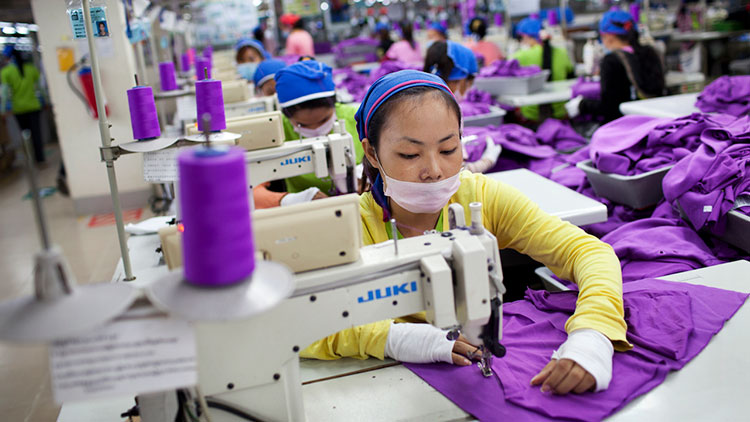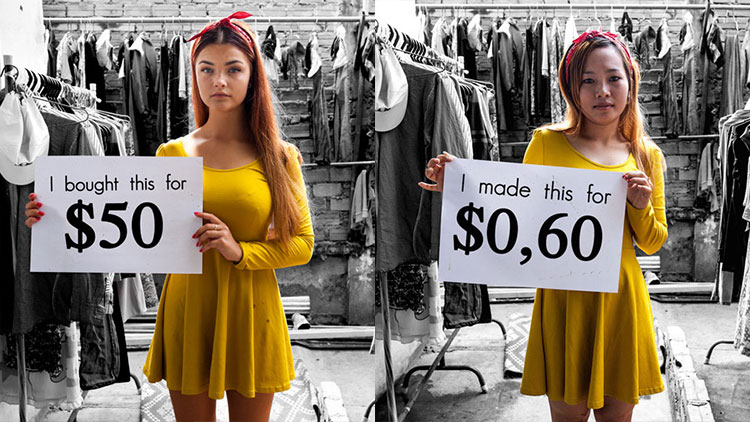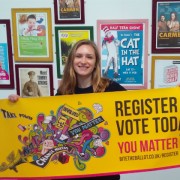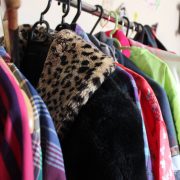By Chloë James and Sophie Soar
Fast fashion exploits workers across the world, sometimes destroying lives. In this series, we will look at the impact of buying outsourced fashion not only on the people who make the clothes, but on the environment, too.
In the early 20th century, London was the textile capital of the world, with east London reigning as its fabricated heart. Now, like the rest of the world, this fashion region has succumbed to the allure of cheap imports and high street brands.
While this might provide consumers with endless bargains and continuously renewed stock to browse, imported fashion is riddled with issues.
On April 23 2013, a garment factory outside Dhaka in Bangladesh collapsed, killing over 1,100 garment workers and injuring 2,600 more. The Rana Plaza factory was Bangladesh’s worst ever industrial disaster, triggering international interest in improving safety and working conditions for garment workers.
Labour Behind the Label is an organisation campaigning for workers’ rights in the clothing industry. “No brand is totally dirty but as well no brand is totally clean,” said Caroline Lewis, Director of Fundraising. “It’s about a supply chain, which we aren’t able to trace back to the source often. We have a fast fashion culture, which puts real pressure on workers. Corners have to be cut in these instances, often their wages or safety conditions.”

Garment workers in the Shen Zhou garment factory in Cambodia. Pic: Will Baxter
In the case of Rana Plaza, a fatal corner was cut the day before the incident. Owners of the complex – home to factories manufacturing for brands including Mango and Primark – were informed of structural cracks but demanded workers return to the dangerous conditions, causing so many to lose their lives and loved ones.
Only 9 of the 29 household names manufacturing in Rana Plaza initially offered victims compensation. It took two years and vigorous campaigning to persuade the last reluctant brands and reach the target of $30 million compensation.
Brands also signed the Bangladesh Accord on Fire and Building Safety – a legal agreement between brands and trade unions to improve factory safety – which was renewed in June 2017. But progress is still slow. A report by the Accord in February 2018 warned “too many” Bangladeshi factories were still unsafe. Multiple British retailers are yet to sign the new Accord, set to be implemented in May, with the Clean Clothes Campaign expressing concern over a “British block” on brands joining the programme.
Lewis adds that Labour Behind the Label also aims to ensure workers are paid a minimum wage as part of a “structural change”. She elaborates it is “not just about putting plasters on issues but structural shift in the way that fashion brands operate.”
With fast fashion comes a high demand for clothes, with workers’ pay method reflecting that. “Often [workers are] paid by piece rather than by hourly rate,” Lewis explains. “So the pressure is really on to produce, produce, produce.”

Pic: Heather Stilwell
Bangladeshi workers are paid the lowest garment manufacturing wage in the world, taking home 3,000 taka – around £25 – a month. This is little more than half of Bangladesh’s living wage, approximated to be £45 a month.
Despite these issues, the UK continues to import the majority of its fashion, bringing £24.5 billion of clothing into the country in 2017, most of which came from Asia and Oceania. The UK fashion industry contributes £28 billion to the British economy, but most manufacturing is outsourced to poorer countries due to cheaper manufacturing costs.
Lewis explains: “We don’t advocate boycotting. If we stopped buying from a certain brand, it could result in workers not having jobs. What we really need is fashion to slow down. It used to be based around two seasons, it’s now 52 weeks a year and that pressure creates exploitation.
“Local industry supports that slow fashion culture. Slow down your fashion, buy locally, support the industry in the UK. We’re strong advocates for that.”
To see where you can buy ethical fashion in your local area and the environmental impact of your clothes, follow our Behind the Seams series here.




